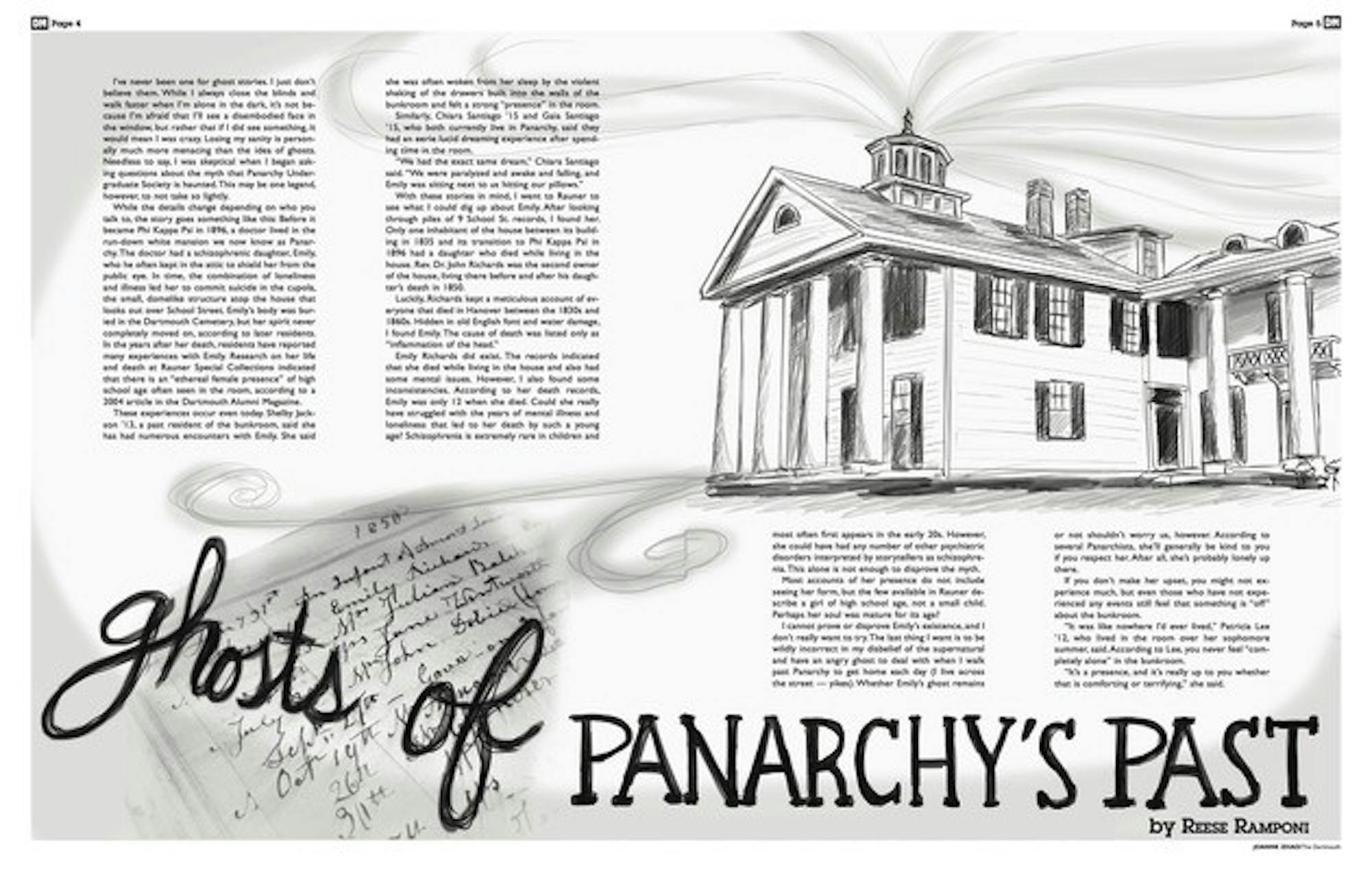While the details change depending on who you talk to, the story goes something like this: Before it became Phi Kappa Psi in 1896, a doctor lived in the run-down white mansion we now know as Panarchy. The doctor had a schizophrenic daughter, Emily, who he often kept in the attic to shield her from the public eye. In time, the combination of loneliness and illness led her to commit suicide in the cupola, the small, domelike structure atop the house that looks out over School Street. Emily's body was buried in the Dartmouth Cemetery, but her spirit never completely moved on, according to later residents. In the years after her death, residents have reported many experiences with Emily. Research on her life and death at Rauner Special Collections indicated that there is an "ethereal female presence" of high school age often seen in the room, according to a 2004 article in the Dartmouth Alumni Magazine.
These experiences occur even today. Shelby Jackson '13, a past resident of the bunkroom, said she has had numerous encounters with Emily. She said she was often woken from her sleep by the violent shaking of the drawers built into the walls of the bunkroom and felt a strong "presence" in the room.
Similarly, Chiara Santiago '15 and Gaia Santiago '15, who both currently live in Panarchy, said they had an eerie lucid dreaming experience after spending time in the room.
"We had the exact same dream," Chiara Santiago said. "We were paralyzed and awake and falling, and Emily was sitting next to us hitting our pillows."
With these stories in mind, I went to Rauner to see what I could dig up about Emily. After looking through piles of 9 School St. records, I found her. Only one inhabitant of the house between its building in 1835 and its transition to Phi Kappa Psi in 1896 had a daughter who died while living in the house. Rev. Dr. John Richards was the second owner of the house, living there before and after his daughter's death in 1850.
Luckily, Richards kept a meticulous account of everyone that died in Hanover between the 1830s and 1860s. Hidden in old English font and water damage, I found Emily. The cause of death was listed only as "inflammation of the head."
Emily Richards did exist. The records indicated that she died while living in the house and also had some mental issues. However, I also found some inconsistencies. According to her death records, Emily was only 12 when she died. Could she really have struggled with the years of mental illness and loneliness that led to her death by such a young age? Schizophrenia is extremely rare in children and most often first appears in the early 20s. However, she could have had any number of other psychiatric disorders interpreted by storytellers as schizophrenia. This alone is not enough to disprove the myth.
Most accounts of her presence do not include seeing her form, but the few available in Rauner describe a girl of high school age, not a small child. Perhaps her soul was mature for its age?
I cannot prove or disprove Emily's existence, and I don't really want to try. The last thing I want is to be wildly incorrect in my disbelief of the supernatural and have an angry ghost to deal with when I walk past Panarchy to get home each day (I live across the street yikes). Whether Emily's ghost remains or not shouldn't worry us, however. According to several Panarchists, she'll generally be kind to you if you respect her. After all, she's probably lonely up there.
If you don't make her upset, you might not experience much, but even those who have not experienced any events still feel that something is "off" about the bunkroom.
"It was like nowhere I'd ever lived," Patricia Lee '12, who lived in the room over her sophomore summer, said. According to Lee, you never feel "completely alone" in the bunkroom.
"It's a presence, and it's really up to you whether that is comforting or terrifying," she said.




